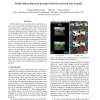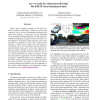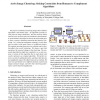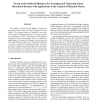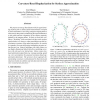CVPR
2012
IEEE
12 years 5 months ago
2012
IEEE
We study the problem of segmenting multiple cell nuclei from GFP or Hoechst stained microscope images with a shape prior. This problem is encountered ubiquitously in cell biology ...
CVPR
2012
IEEE
12 years 5 months ago
2012
IEEE
We present a novel dataset and novel algorithms for the problem of detecting activities of daily living (ADL) in firstperson camera views. We have collected a dataset of 1 millio...
CVPR
2012
IEEE
12 years 5 months ago
2012
IEEE
For scene classification, patch-level linear features do not always work as well as handcrafted features. In this paper, we present a new model to greatly improve the usefulness ...
CVPR
2012
IEEE
12 years 5 months ago
2012
IEEE
Mobile platforms such as smart-phones and tablet computers have attained the technological capacity to perform tasks beyond their intended purposes. The steady increase of process...
CVPR
2012
IEEE
12 years 5 months ago
2012
IEEE
Today, visual recognition systems are still rarely employed in robotics applications. Perhaps one of the main reasons for this is the lack of demanding benchmarks that mimic such ...
CVPR
2012
IEEE
12 years 5 months ago
2012
IEEE
We propose a method of clustering images that combines algorithmic and human input. An algorithm provides us with pairwise image similarities. We then actively obtain selected, mo...
CVPR
2012
IEEE
12 years 5 months ago
2012
IEEE
We introduce a framework for defining a distance on the (non-Euclidean) space of Linear Dynamical Systems (LDSs). The proposed distance is induced by the action of the group of o...
CVPR
2012
IEEE
12 years 5 months ago
2012
IEEE
We introduce a saliency model based on two key ideas. The first one is considering local and global image patch rarities as two complementary processes. The second one is based o...
CVPR
2012
IEEE
12 years 5 months ago
2012
IEEE
In this paper we examine the effect of receptive field designs on classification accuracy in the commonly adopted pipeline of image classification. While existing algorithms us...
CVPR
2012
IEEE
12 years 5 months ago
2012
IEEE
We propose an energy-based framework for approximating surfaces from a cloud of point measurements corrupted by noise and outliers. Our energy assigns a tangent plane to each (noi...

